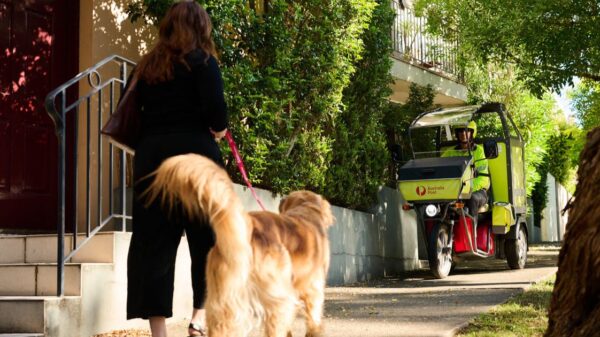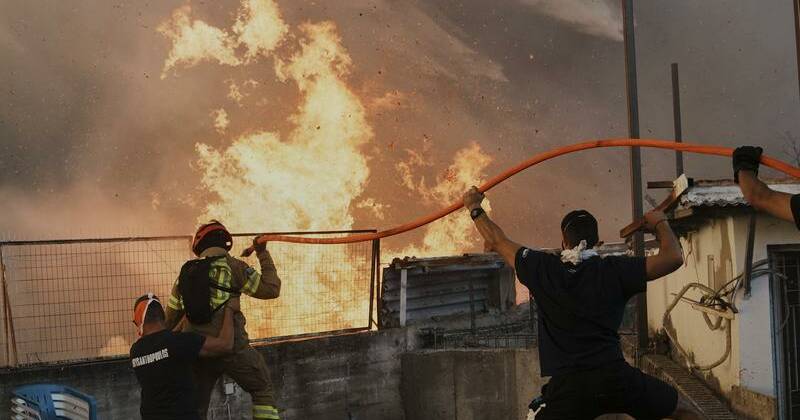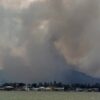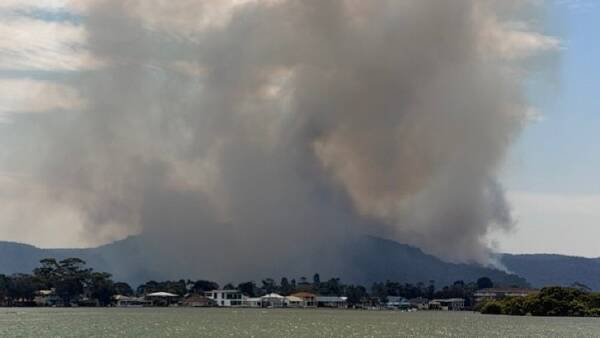A series of wildfires fueled by a heatwave and strong winds have devastated southern Europe, prompting mass evacuations and destruction of property. The blazes, some sparked by arsonists and thunderstorms, have scorched nearly 440,000 hectares of land across the continent in 2025, which is double the average for this time of year since 2006, according to the European Union Science Hub’s Joint Research Centre.
In Greece, flames have engulfed olive groves and forests, disrupting rail traffic on the outskirts of Patras, located west of Athens. Local volunteer Giorgos Karvanis, who traveled from Athens to assist, described the scene as “doomsday,” emphasizing the urgency of the situation. Authorities have ordered evacuations in towns near Patras, including a community of approximately 7,700 residents, and have issued new alerts for nearby villages as the fire spreads. On the islands of Chios and Cephalonia, popular tourist destinations, residents have also been instructed to seek safety.
In Spain, the situation is equally dire. A volunteer firefighter lost his life due to severe burns while attempting to create firebreaks near Nogarejas in the central Castile and Leon region. He was 35 years old and became the sixth fatality in wildfires in Spain this year, joining two other firefighters who died in separate incidents in Tarragona and Avila. The national weather agency, AEMET, has warned that most of Spain is at extreme or very high risk of fire.
Experts are raising alarms about the inadequate safety measures in place for firefighters. Alexander Held, a senior expert in fire management at the European Forest Institute, stressed the need for better preparation, such as creating buffer zones and clearing combustible vegetation. He likened the current situation to expecting firefighters to enter an industrial building lacking basic safety features, stating, “Take an industrial building and imagine there would be no fire detectors, no sprinkler systems, no fire protection doors and no escape routes – firefighters would just refuse to go in.”
Investment in forest management is being called for, with Greenpeace suggesting that an annual budget of 1 billion euros could save 9.9 million hectares—an area comparable to Portugal—and prevent 99 billion euros in expenses related to fighting fires and restoration efforts.
The Spanish Environment Minister, Sara Aagesen, noted that many of the fires are believed to be arson-related, citing their “virulence.” Authorities have arrested a male firefighter for allegedly starting fires in the Avila area, while a police investigation is ongoing into a 63-year-old woman suspected of igniting fires in Galicia’s Muxia region. Another suspect, reportedly suffering from burns to his hands, is under investigation for starting a small fire in a beachfront development in the southern coastal Cadiz area.
Thunderstorms have also contributed to the outbreak of fires. On Tuesday afternoon, the fire department in Andalusia received numerous calls regarding a blaze ignited by a lightning strike in a forested area near Huelva. The fire led to the evacuation of about 250 residents but was largely contained by Wednesday morning. In Portugal, a fire in Trancoso has been exacerbated by renewed lightning activity, causing concerns for local authorities.
In Albania, Defense Minister Pirro Vengu described the current week as “critical” as multiple significant wildfires rage across the country. Approximately 10,000 firefighters, soldiers, and police emergency units are actively battling 24 wildfires as of Wednesday, according to the country’s defense ministry.
As southern Europe grapples with these devastating wildfires, the need for enhanced prevention and management strategies has never been more urgent. The combined efforts of local authorities, volunteers, and emergency services remain critical in combating the ongoing threat posed by these fires.





























































